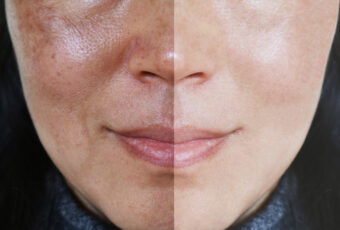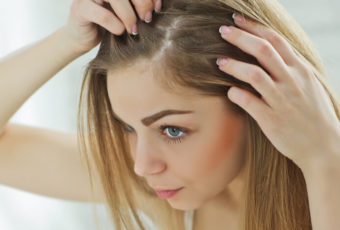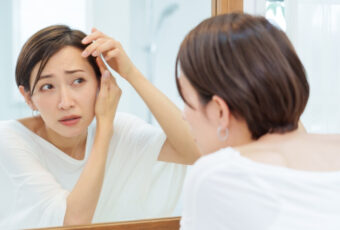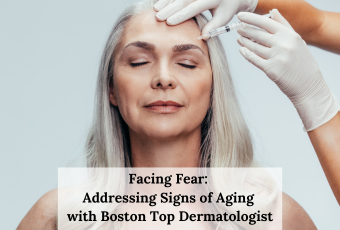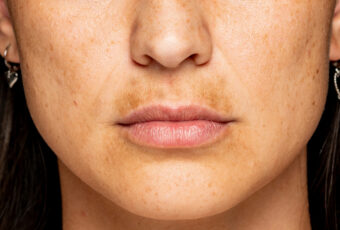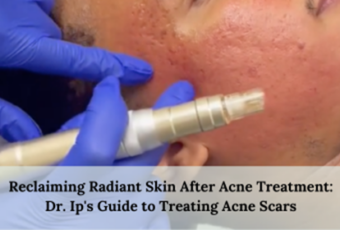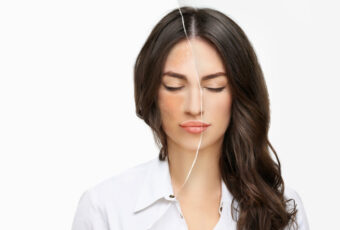Melasma, a common skin condition characterized by dark, discolored facial patches, can frustrate many. Finding effective treatment options for melasma is crucial because it can impact one’s appearance. Two primary approaches stand out in the realm of melasma treatment: professional dermatologist treatments and do-it-yourself (DIY) home remedies. Each has its pros and cons, and understanding these options can help you make an informed choice on tackling this persistent skin issue.
What Is Melasma?
Melasma is a skin condition characterized by dark, discolored patches on the skin. Melasma is most commonly found on the face, especially on the cheeks, bridge of the nose, forehead, chin, and above the upper lip. It can also appear on other body parts exposed to the sun, such as the forearms and neck. Melasma is particularly common in women, especially during pregnancy, when it’s sometimes called the “mask of pregnancy.” However, men can also be affected.
The exact cause of melasma is not completely understood, but it is believed to be related to several factors, including sun exposure, hormonal changes (such as those occurring during pregnancy or through the use of birth control pills), and genetic predisposition. Melasma is more common in people with darker skin tones and those who live in areas with high sun exposure.
What Are Some Treatments That Dermatologists Provide for Melasma?
When it comes to professional treatment, dermatologists offer a range of options tailored to the severity and type of melasma. Some of these treatments include:
Chemical Peels
Chemical peels involve applying a chemical solution to the skin, which causes the skin’s outer layer to peel off. This process not only helps remove the surface layer of discolored skin but also stimulates the production of new, healthier skin underneath, potentially reducing the appearance of melasma. The type of chemical peel and its strength are customized based on the individual’s skin type and the severity of the melasma.
Laser Therapy
Laser therapy employs focused light energy to target and break down the melanin pigments responsible for melasma’s dark patches. By selectively heating and destroying these pigments, laser therapy can lead to a more even skin tone. Multiple sessions may be needed for the best results, and the treatment’s effectiveness can vary depending on the person’s skin type and the melasma’s characteristics.
Prescription Medications
Prescription medications, such as topical creams containing hydroquinone, tretinoin, or other active ingredients, are commonly prescribed to lighten melasma patches. Hydroquinone decreases the formation of melanin in the skin, while tretinoin promotes skin cell turnover, helping to fade dark spots and improve the skin’s overall texture.
What Are Some DIY Home Remedies for Melasma?
DIY home remedies offer an alternative for those who prefer a more natural or cost-effective approach. Some popular options include:
Topical Creams
Topical creams available over the counter that contain kojic acid, licorice extract, or vitamin C can aid in reducing the appearance of melasma. These particular ingredients work by inhibiting melanin production in the skin, which can gradually lighten dark patches with regular application over a period.
Masks
Natural masks made from household items like lemon juice, turmeric, or aloe vera are believed to offer mild skin-lightening benefits. Lemon juice acts as a natural bleaching agent, turmeric contains curcumin, which reduces melanin production, and aloe vera soothes the skin and may help fade discoloration with consistent use.
Lifestyle Changes
Lifestyle changes, such as applying sunscreen daily and wearing protective clothing, can significantly prevent melasma from becoming more pronounced. Avoiding direct sunlight and known triggers like hormonal changes or certain medications can also be crucial in managing and preventing the spread of melasma.
Comparing Dermatologist and DIY Approaches to Melasma
When choosing between dermatologist treatments and DIY remedies for melasma, it’s important to weigh their effectiveness, safety, and cost. Professional treatments typically offer more potent results more quickly but may involve some mild side effects. However, dermatologists provide options with established safety profiles, contrasting with the variable safety of DIY remedies. While professional treatments come with a cost, DIY options tend to be more budget-friendly. The best choice will depend on your needs, skin type, and the severity of your condition, highlighting the importance of considering all factors to make an informed decision.
Our Melasma Treatments
At Vibrant Dermatology, we specialize in treating melasma with a range of options, including topical creams containing hydroquinone, retinoids, and azelaic acid to lighten dark patches and promote skin renewal. Additionally, our Aerolase laser treatment utilizes light energy to target melanin, making it suitable for all skin types with minimal downtime. This non-invasive treatment option is ideal for those seeking effective results without major disruptions to their daily routine.
We also offer chemical peels to remove the top skin layers, revealing a more even complexion. These treatments cater to various needs, ensuring improved skin texture and tone while addressing melasma effectively.
Uncover Radiant Skin: Effective Melasma Treatment Options in Dedham, MA
Melasma can be a challenging condition to treat, but it’s possible to manage its appearance with the right approach. Whether you choose professional dermatologist treatments or DIY home remedies, it’s essential to understand your skin and your options. If you need help figuring out where to start, consulting with a dermatologist can provide you with a personalized treatment plan and the guidance to achieve clearer, more even-toned skin.
At Vibrant Dermatology in Dedham, MA, we offer specialized melasma treatments tailored to your unique skincare needs. To learn more about our services or to schedule a consultation, please contact us online or reach out to us by phone at (781) 708-9299. We are dedicated to providing personalized care and effective solutions for your skin concerns.

